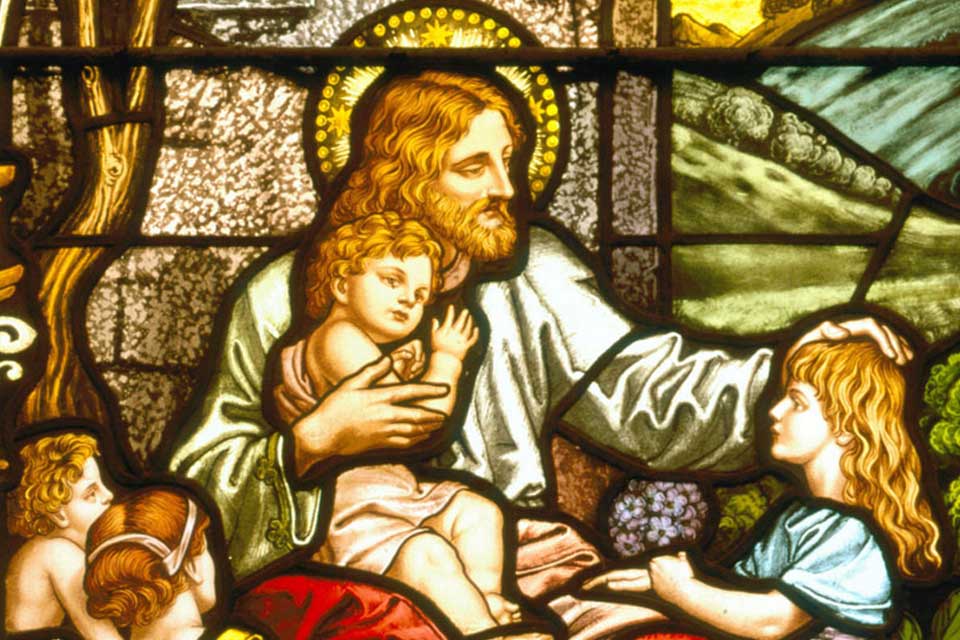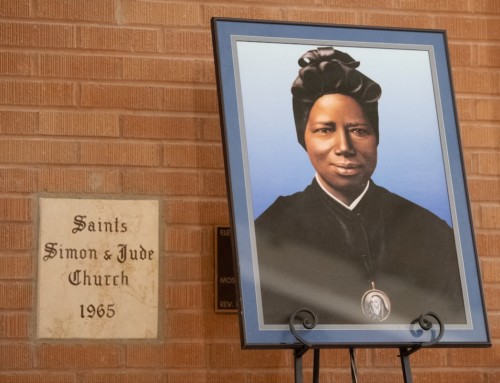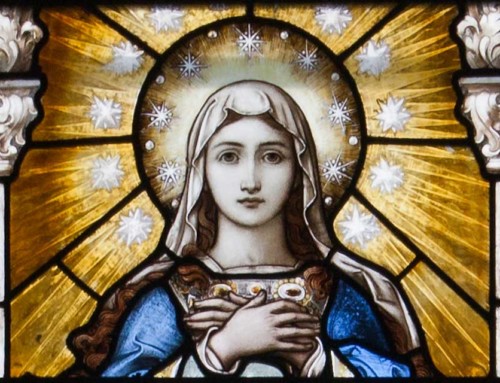Following is the prepared text from Bishop Thomas J. Olmsted’s homily for the 27th Sunday of Ordinary Time.
October 7, 2018
…a man shall leave his father and mother and be joined to his wife and the two shall become one flesh…Therefore what God has joined together, no human being must separate. Mark 10:2ff
These words of Jesus underline God’s plan for marriage, a plan of great beauty, a plan of vital importance for society and the Church, a plan that is really good news for each man and woman who freely enter into this unbreakable bond and remain faithful forever. God’s plan for marriage is also certainly good news for children.
However, God’s plan for marriage has never been free of controversy—not because His plan is wrong—far from it—but because many don’t know marriage is God’s plan, or they don’t really believe it. Mistakenly, they think divorce solves their problems.
This controversy over divorce was evident in the confrontation between some Pharisees and Jesus. The Pharisees argued that divorce was fine because, as the Book of Deuteronomy says (24:1), Moses permitted a husband to divorce his wife and marry another. But Moses only did this, Jesus insisted, because of the people’s “hardness of heart.” It was not God’s plan from the beginning, “…God made them male and female, and what God has joined together, no human being must separate.”
Jesus’ teaching could not be more crystal clear; nonetheless, His own disciples were not yet persuaded. So, as soon as Jesus and His disciples withdrew from the crowd into a house, they questioned Him about this. He not only reaffirmed God’s prohibition of a man divorcing his wife but added that the wife also cannot divorce her husband.
Jesus’ words, while true and therefore a blessing for whomever will accept them, did not come close to ending the controversy. e.g.—John the Baptist died as a martyr because he told Herod it was wrong for him to divorce his wife and marry another. Over 1500 years later, Saints Thomas More and his contemporary Bishop John Fisher were martyred by King Henry VIII for refusing to give public approval of his divorce. In our own time, an epidemic of divorce weakens the social fabric of our society and, within the Church herself, controversy over divorce continues, with dissident voices heard even among bishops and cardinals. So, what are we to make of this? We need to trust the truth, that we need to trust Jesus, who clearly teaches that “whoever divorces his wife and marries another commits adultery.”
Our own experience confirms this teaching. The pain and ugliness of divorce has touched all of us. Who can deny the terrible suffering caused by the breakdown of the family? This suffering is agonizing for abandoned spouses and, in particular, for children. The excruciating suffering of children of divorce is not something overlooked by Jesus. Notice in today’s Gospel how, immediately after speaking of divorce, Jesus’ attention was given at once to children. His own disciples tried to stop the children from getting near to him but
“when Jesus saw this He became indignant and said to them, ‘Let the children come to me; do not prevent them, for the Kingdom of God belongs to such as these. Amen, I say to you, whoever does not accept the Kingdom of God like a child will not enter it’. Then, He embraced them and blessed them, placing His hands on them.”
The suffering of children grieves the heart of Christ still today. In every time and place He draws near to children and invites them to find healing and consolation in Him and His Church.
Marriage is meant not only for the good of husband and wife but also for the good of their children. Married couples who welcome children, rejecting the evil of contraception and remaining always open to fruitfulness in their conjugal love, are imitating the fidelity of Jesus Himself.
St. Paul writes of this mystery of fidelity in his letter to the Ephesians (Eph 5:25f), “Husbands, love your wives, even as Christ loved the Church and handed Himself over for her to sanctify her.”
In our First Reading today, the Book of Genesis tells us that, after God created Eve from the side of Adam, He brought her to Adam, who exclaimed: “This one, at last, is bone of my bones and flesh of my flesh.” With these words, Adam was praising God and expressing his delight in the beauty he found in Eve. He was also pointing towards two other things: the great dignity and yet the frailty of married life.
Bone and flesh are what the human body is made of. All humans, men and women, share this physical fact. They also share its symbolic meaning: bone represents strength, and flesh represents weakness.
Both man and woman are weak, and yet both at times are strong. God’s plan for marriage takes this into account. That is why, from the beginning, at the exchange of marriage vows, they promise to be true to each other “in good times and in bad, in sickness and in health, in weakness and in strength.”
In the marital union of two persons with both strengths and weaknesses, man and women are caught up into the mystery of lifelong love designed by God from the beginning. This is how God’s love, united with human love, becomes concrete.
This also explains why couples are so capable of deeply wounding one another when they fail to love and so capable of building up each other when they love each other just as Christ loves the Church.
Divorce was never part of God’s plan. This aberration comes about because of a hardness of heart and a failure of faith. At every point in human history, the battle against hardness of heart rages within our souls, and it is played out in our families. It is the reason Christ died for us on the Cross, to save us from our sins, to crush our hearts of stone, and to transform them into hearts of flesh, united to the heart of Christ.
In the Eucharist, we enter more deeply into this mystery of love. We deepen our union with the Lamb of God who takes away the sins of the world. How good it is to be here, in the presence of our Lord Jesus Christ. Let us trust the truth. Let us trust in His plan for marriage.





